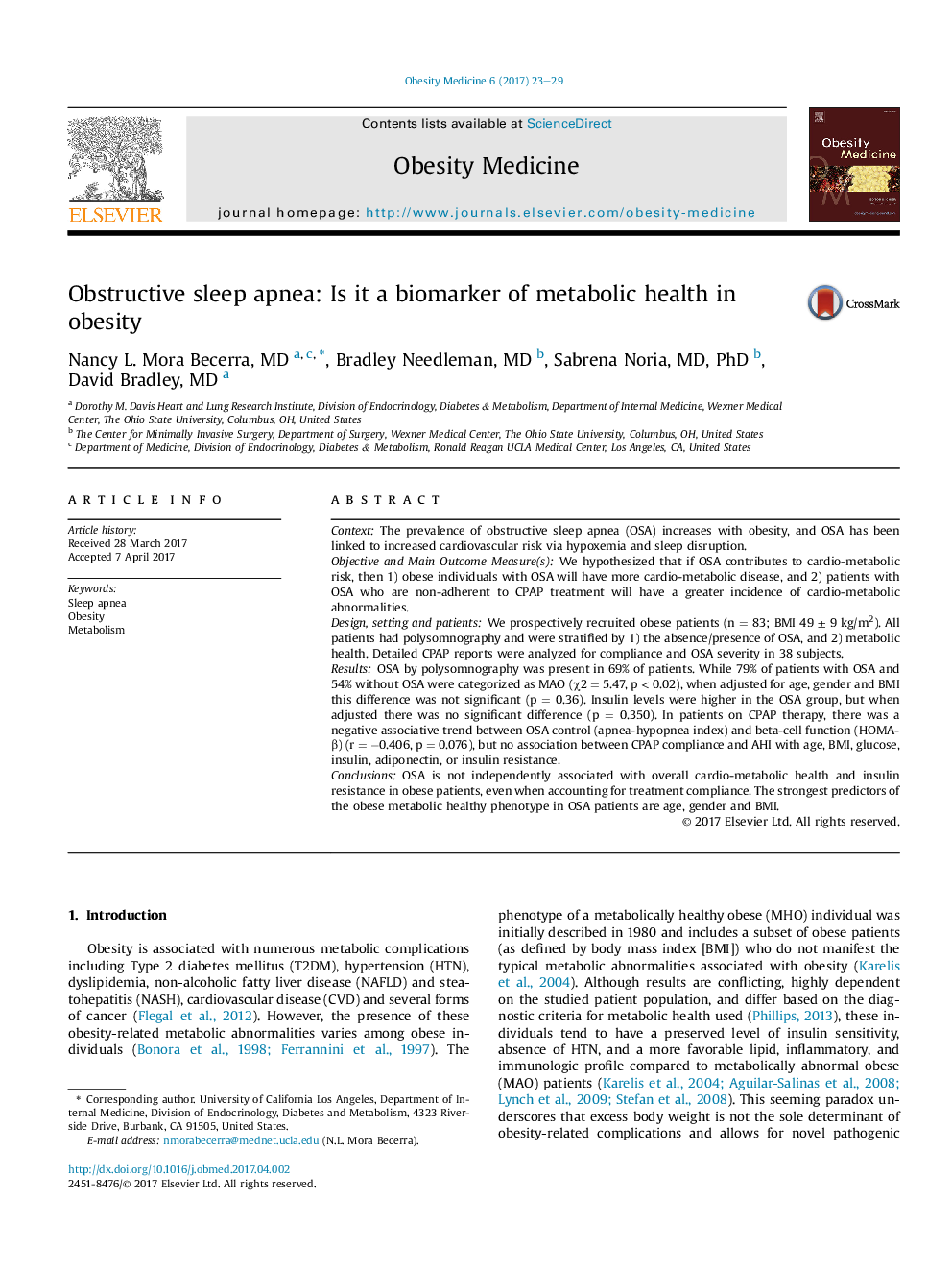| کد مقاله | کد نشریه | سال انتشار | مقاله انگلیسی | نسخه تمام متن |
|---|---|---|---|---|
| 5123771 | 1487581 | 2017 | 7 صفحه PDF | دانلود رایگان |
- OSA is not independently associated with overall cardio-metabolic health.
- The strongest predictors of overall metabolic health are age, gender, and BMI.
- OSA severity may be independently predictive of β-cell function.
- The presence of OSA is not a significant predictor of the metabolic phenotype.
ContextThe prevalence of obstructive sleep apnea (OSA) increases with obesity, and OSA has been linked to increased cardiovascular risk via hypoxemia and sleep disruption.Objective and Main Outcome Measure(s)We hypothesized that if OSA contributes to cardio-metabolic risk, then 1) obese individuals with OSA will have more cardio-metabolic disease, and 2) patients with OSA who are non-adherent to CPAP treatment will have a greater incidence of cardio-metabolic abnormalities.Design, setting and patientsWe prospectively recruited obese patients (n = 83; BMI 49 ± 9 kg/m2). All patients had polysomnography and were stratified by 1) the absence/presence of OSA, and 2) metabolic health. Detailed CPAP reports were analyzed for compliance and OSA severity in 38 subjects.ResultsOSA by polysomnography was present in 69% of patients. While 79% of patients with OSA and 54% without OSA were categorized as MAO (Ï2 = 5.47, p < 0.02), when adjusted for age, gender and BMI this difference was not significant (p = 0.36). Insulin levels were higher in the OSA group, but when adjusted there was no significant difference (p = 0.350). In patients on CPAP therapy, there was a negative associative trend between OSA control (apnea-hypopnea index) and beta-cell function (HOMA-β) (r = â0.406, p = 0.076), but no association between CPAP compliance and AHI with age, BMI, glucose, insulin, adiponectin, or insulin resistance.ConclusionsOSA is not independently associated with overall cardio-metabolic health and insulin resistance in obese patients, even when accounting for treatment compliance. The strongest predictors of the obese metabolic healthy phenotype in OSA patients are age, gender and BMI.
Journal: Obesity Medicine - Volume 6, June 2017, Pages 23-29
